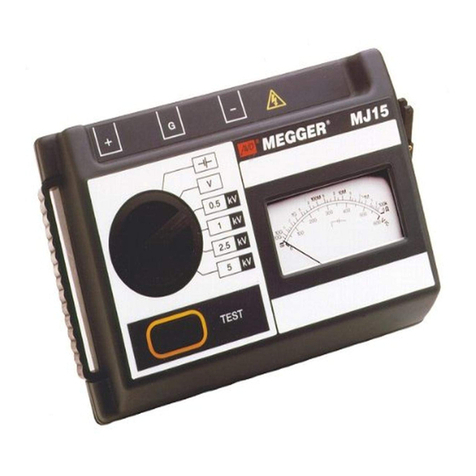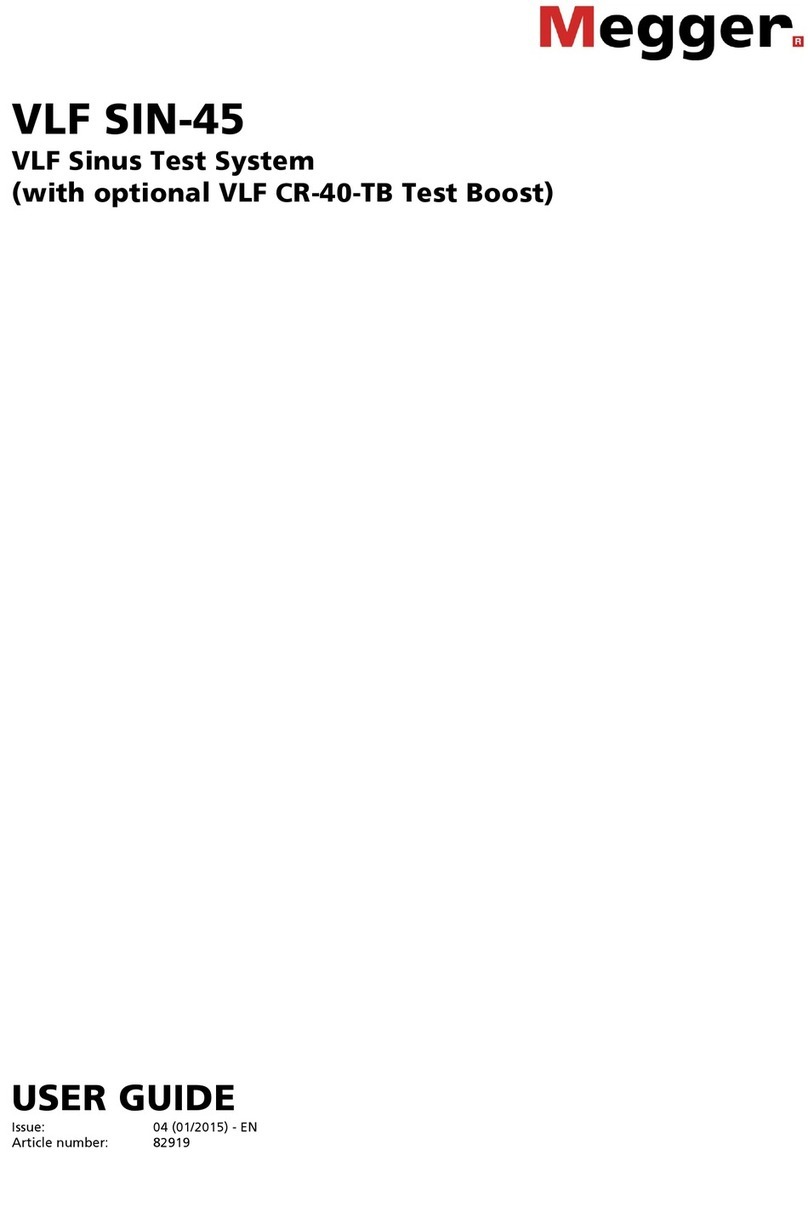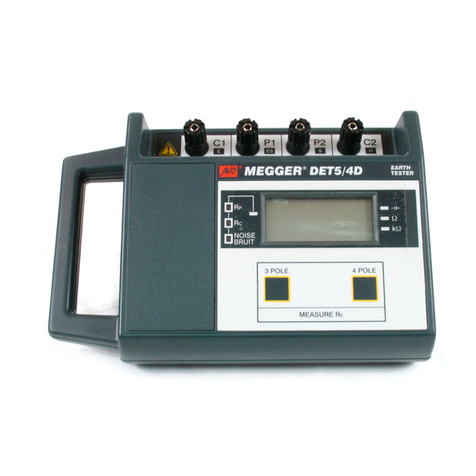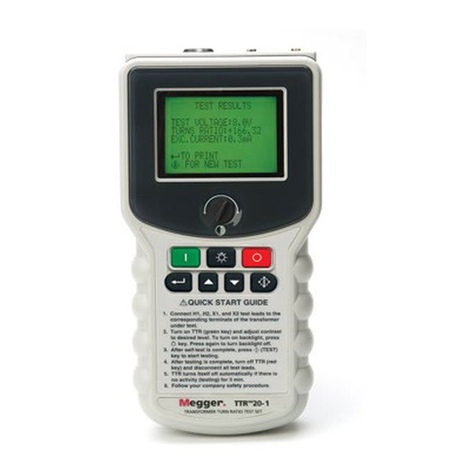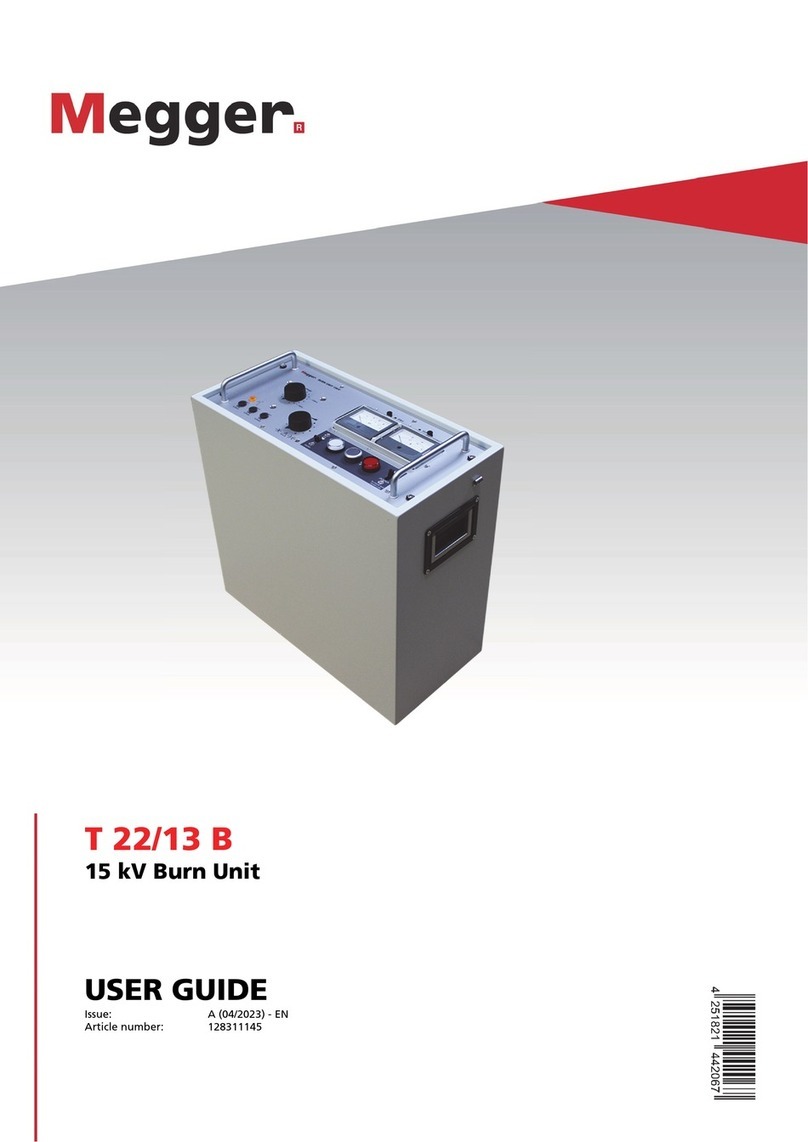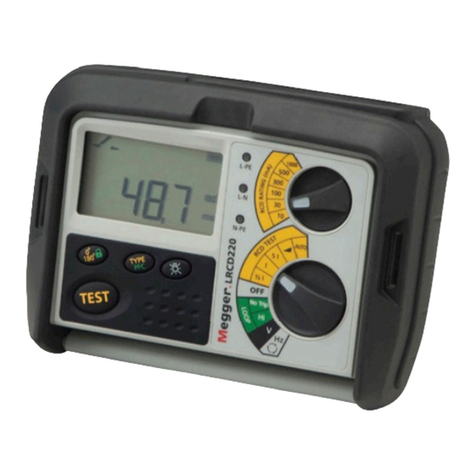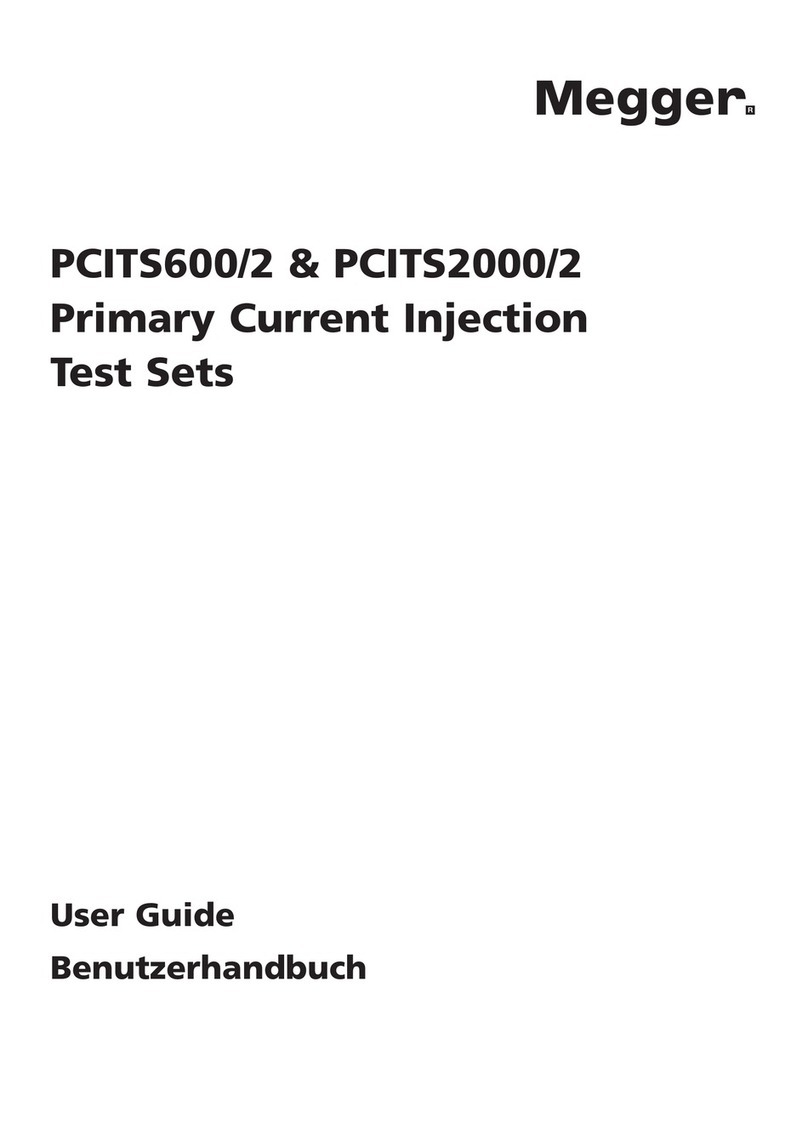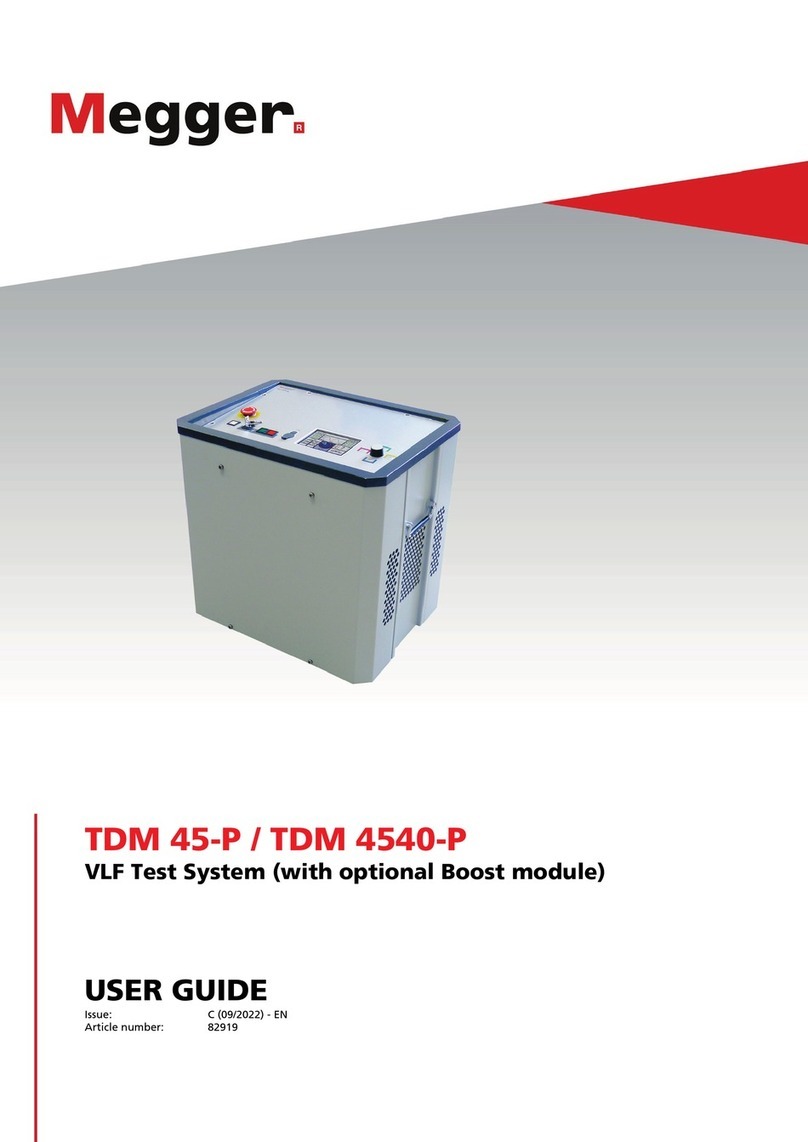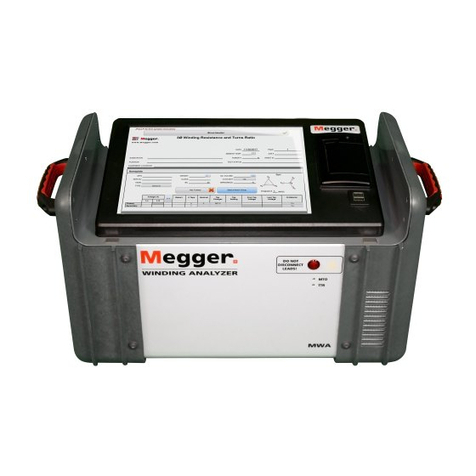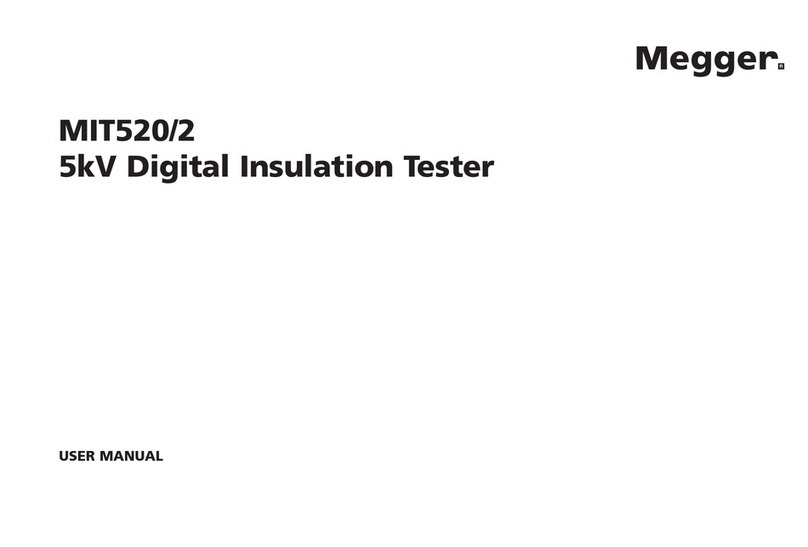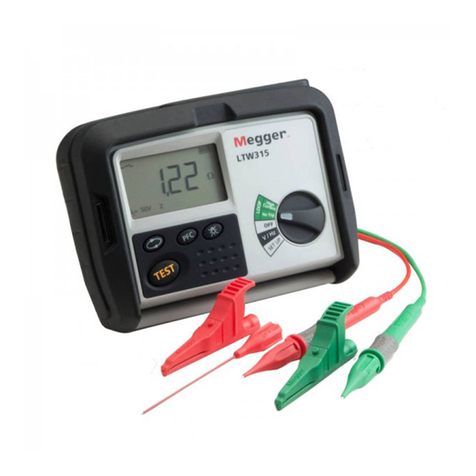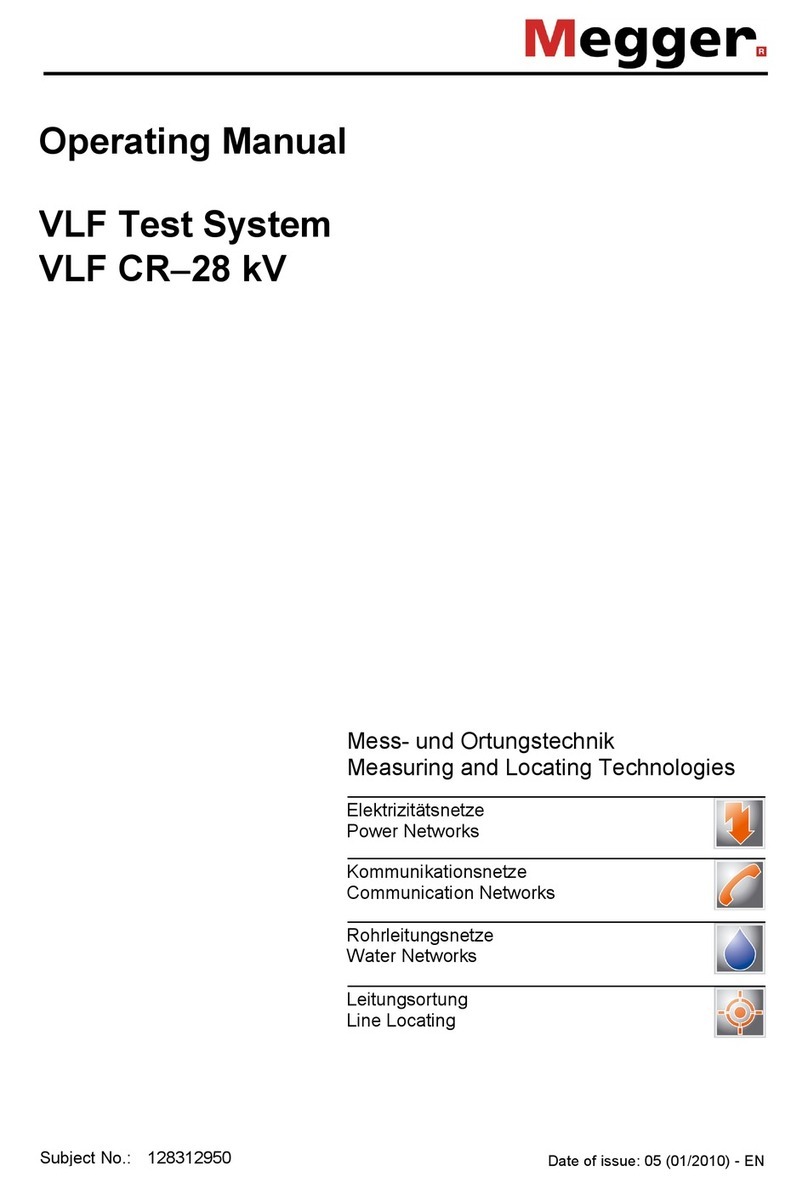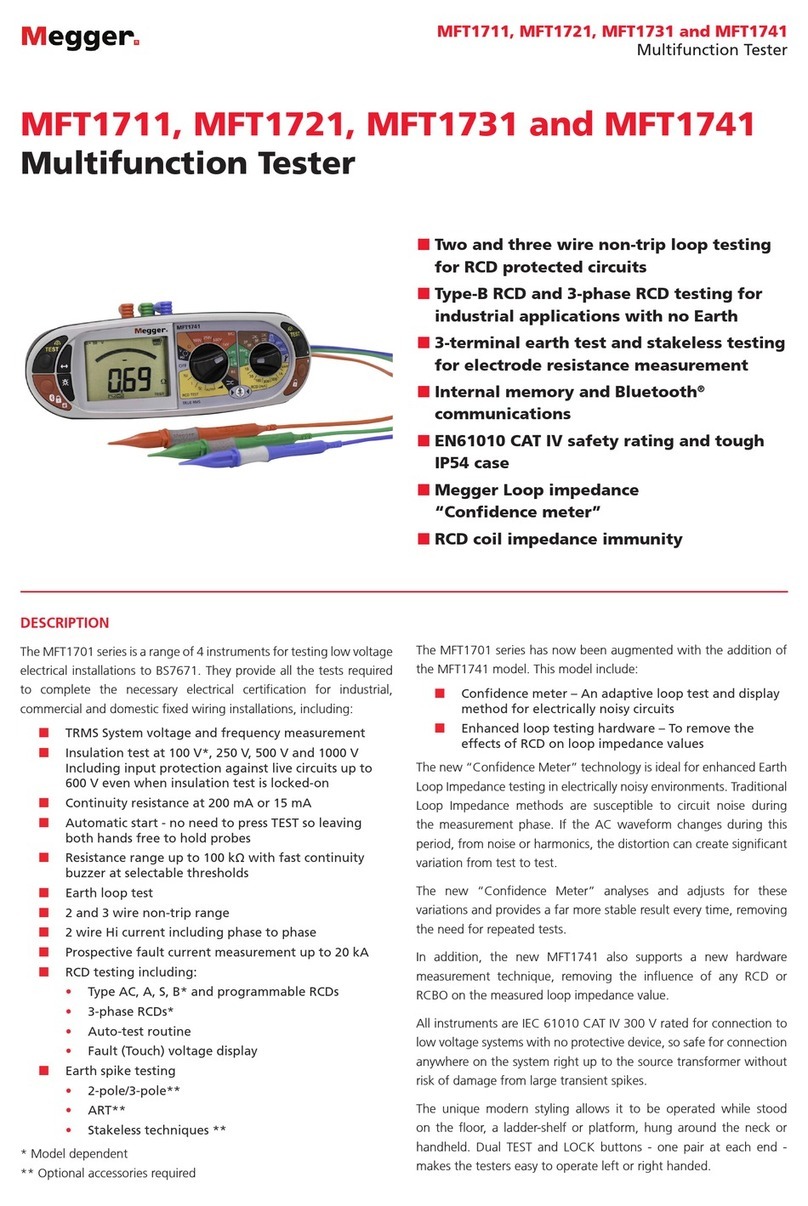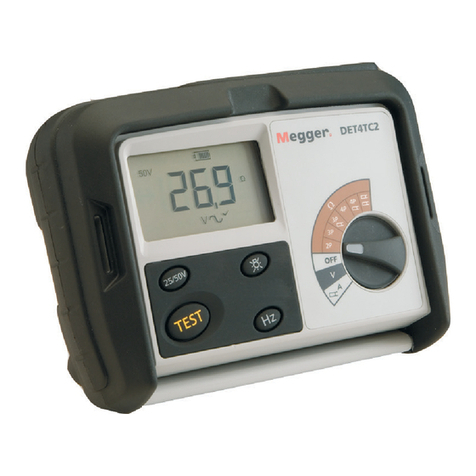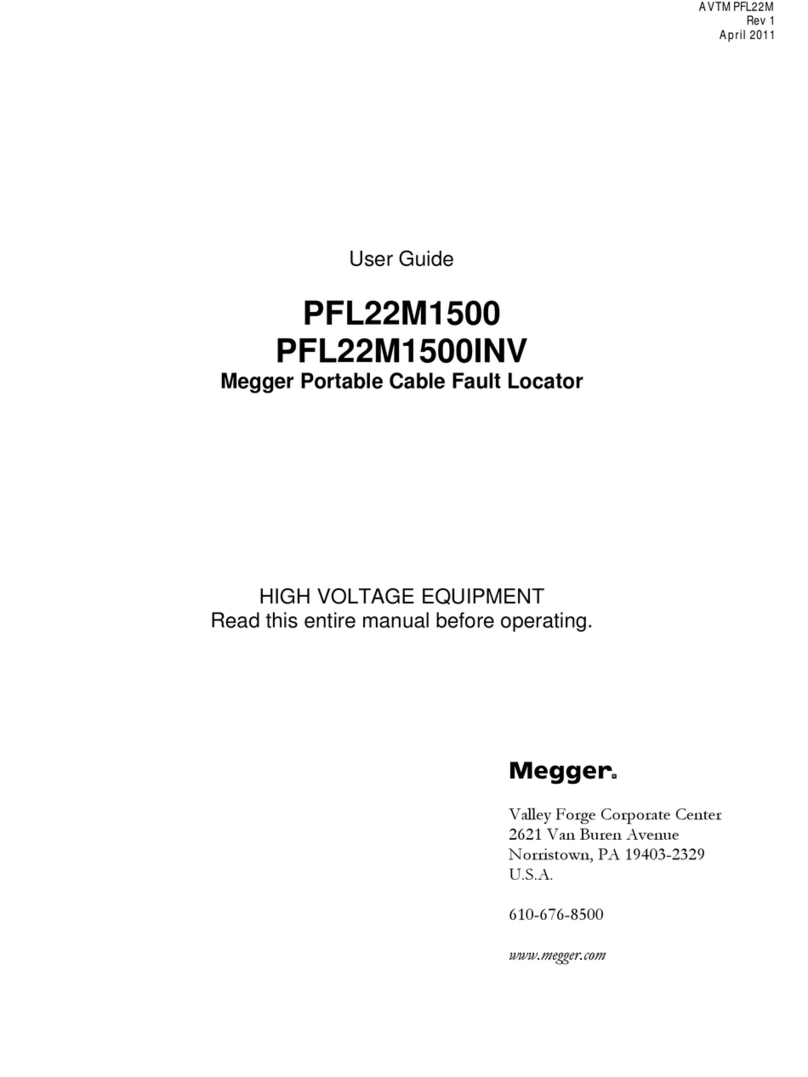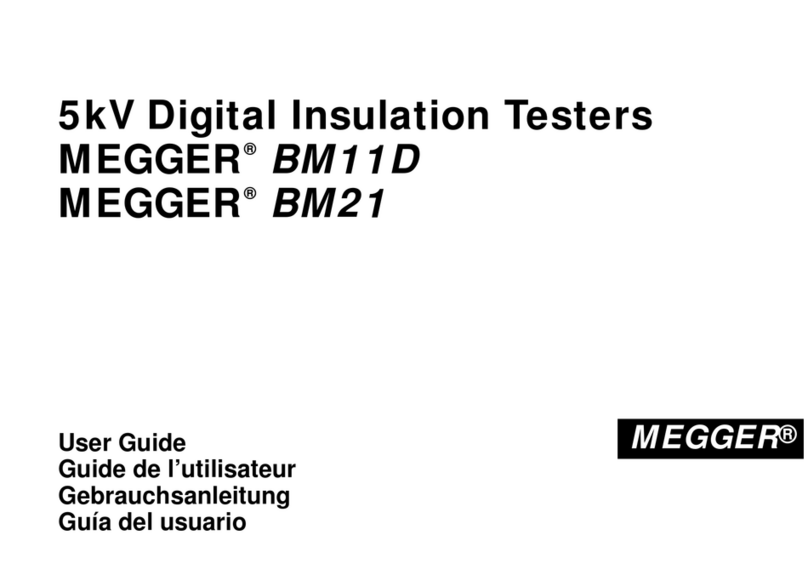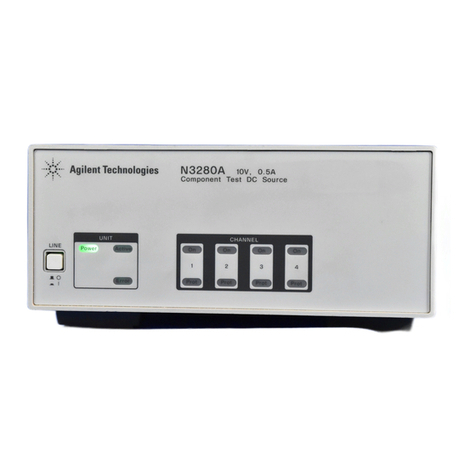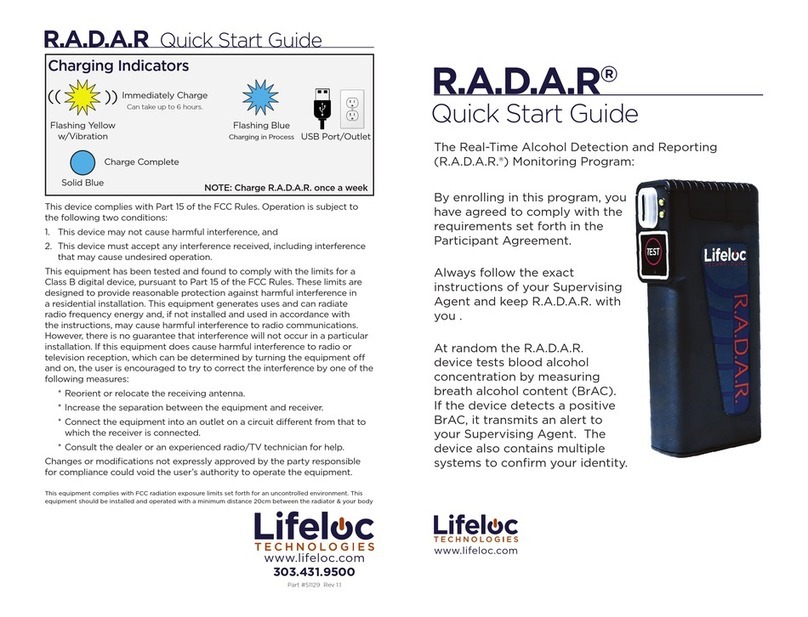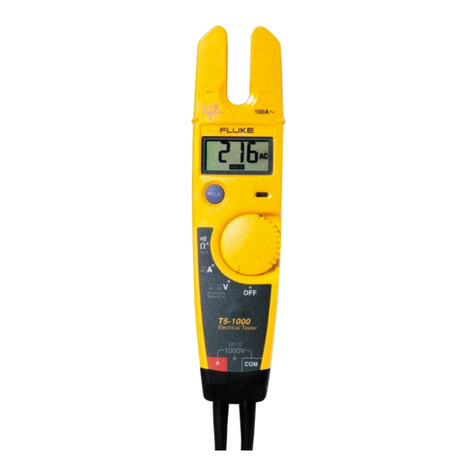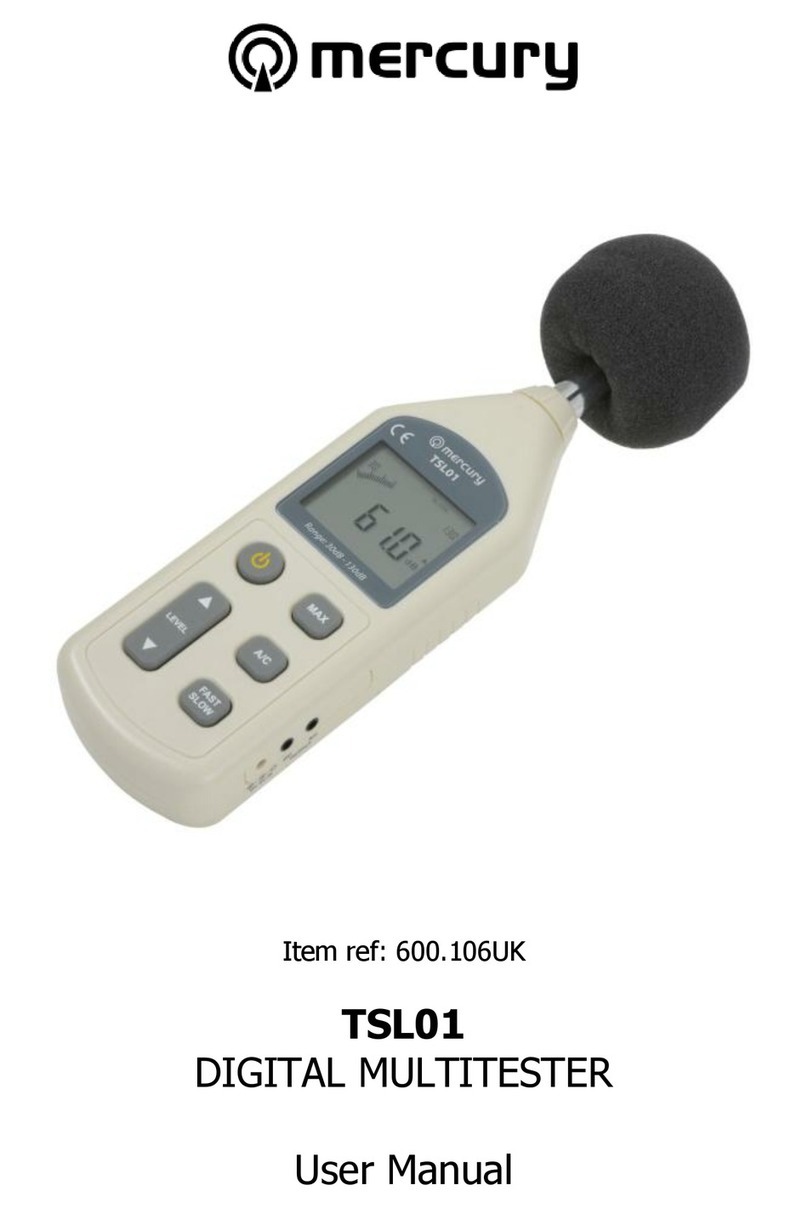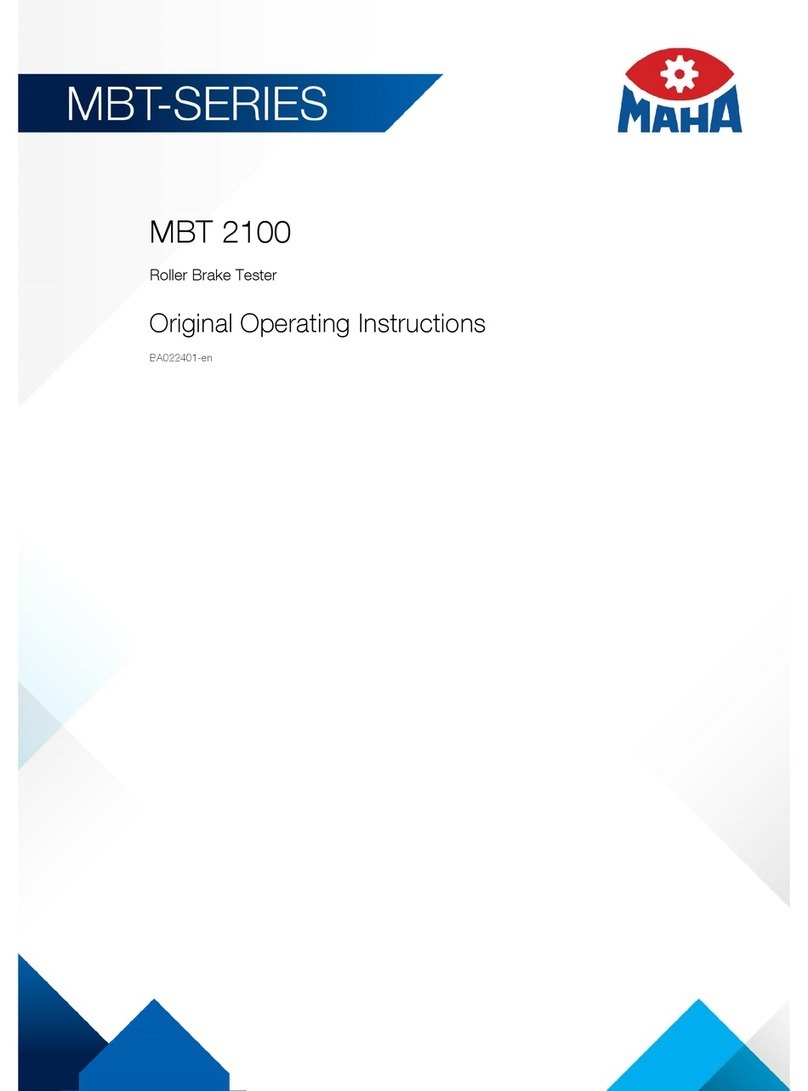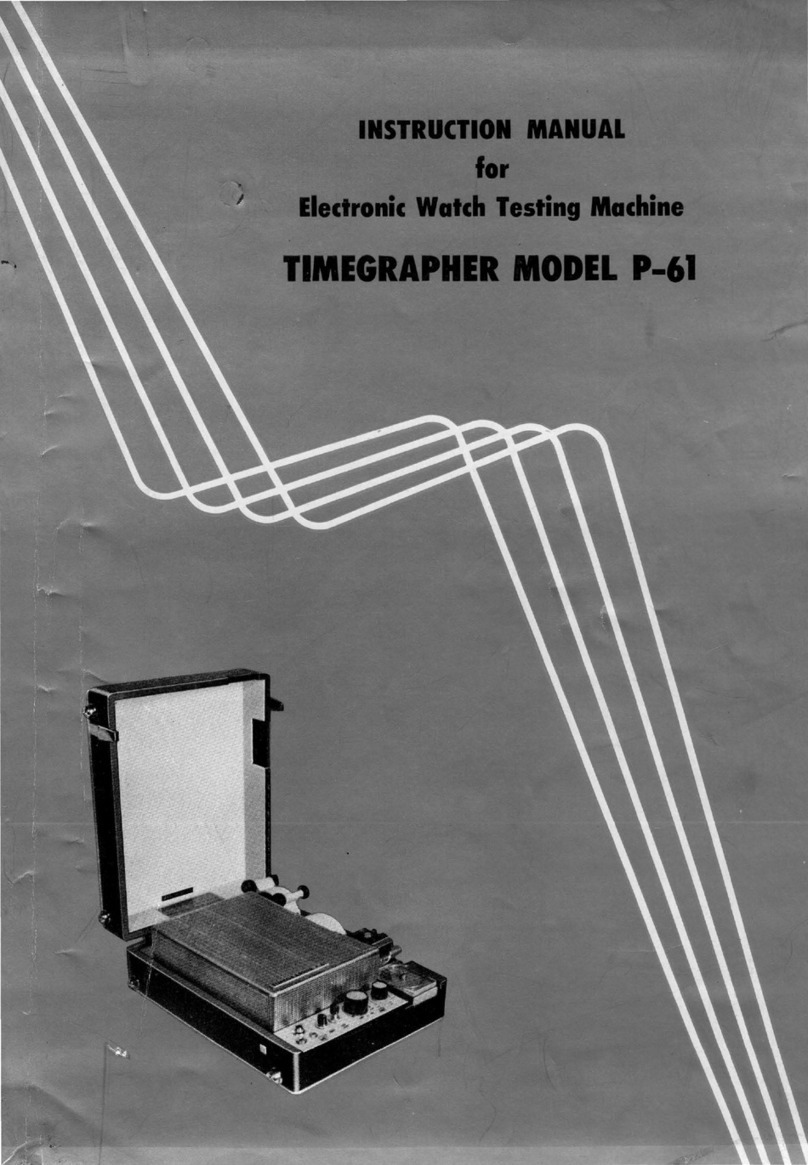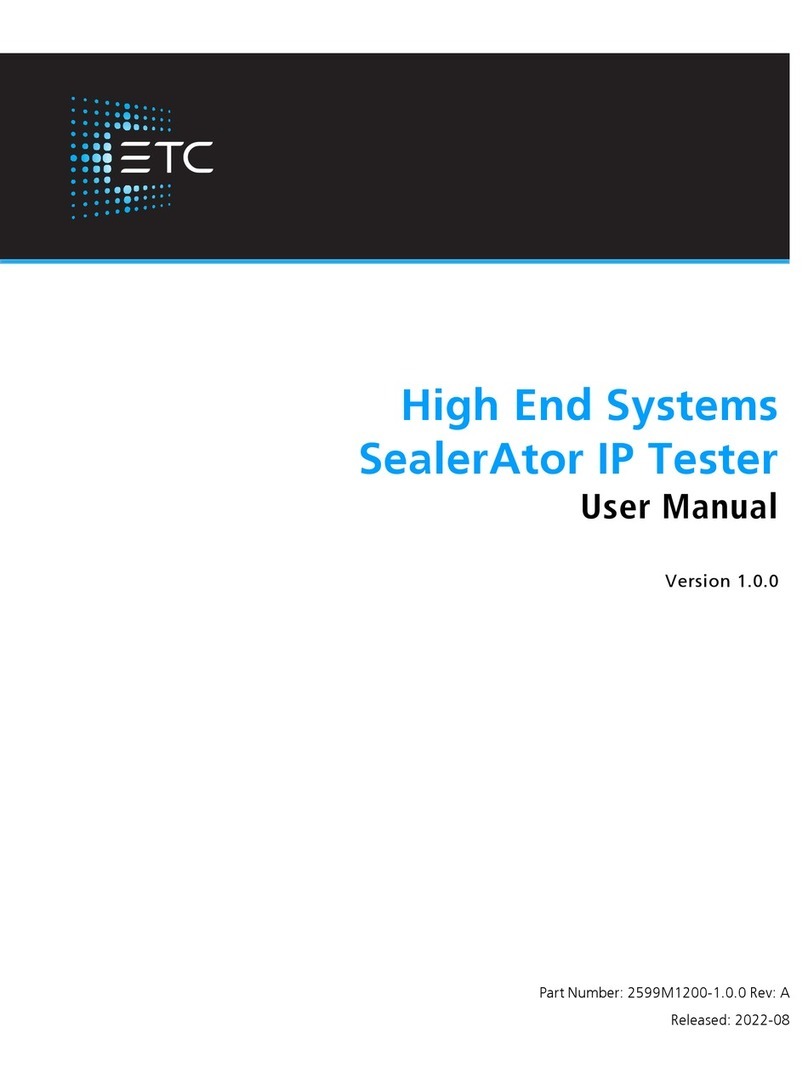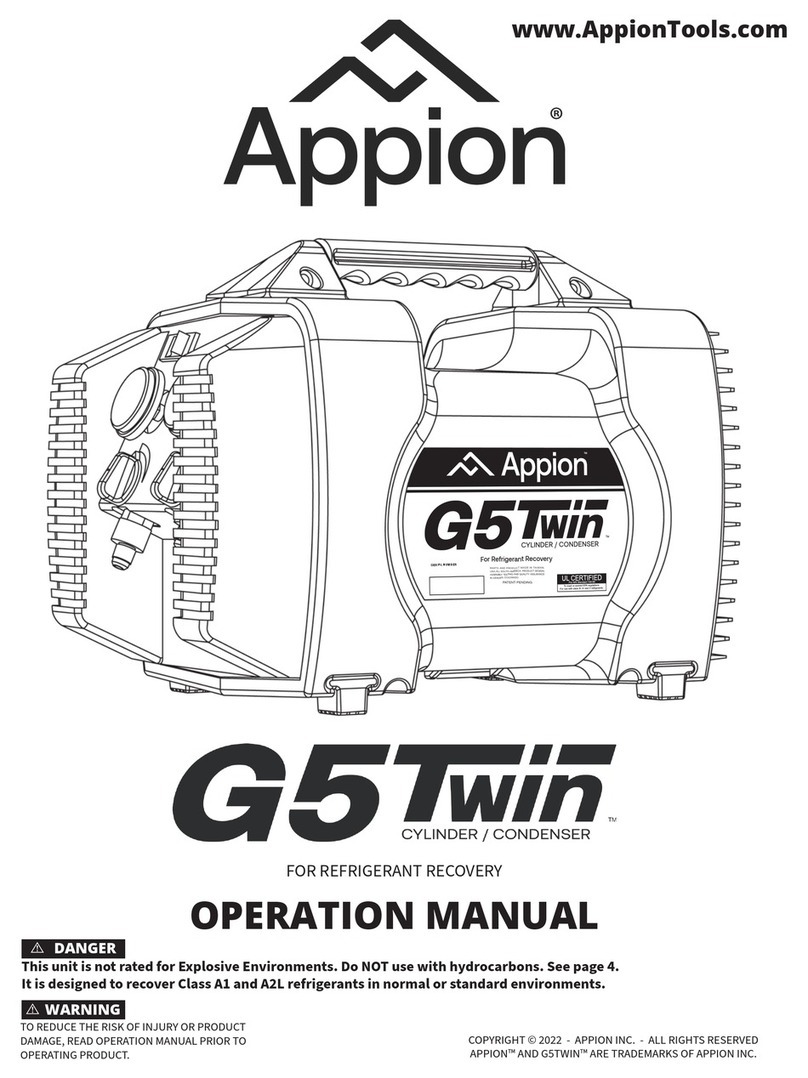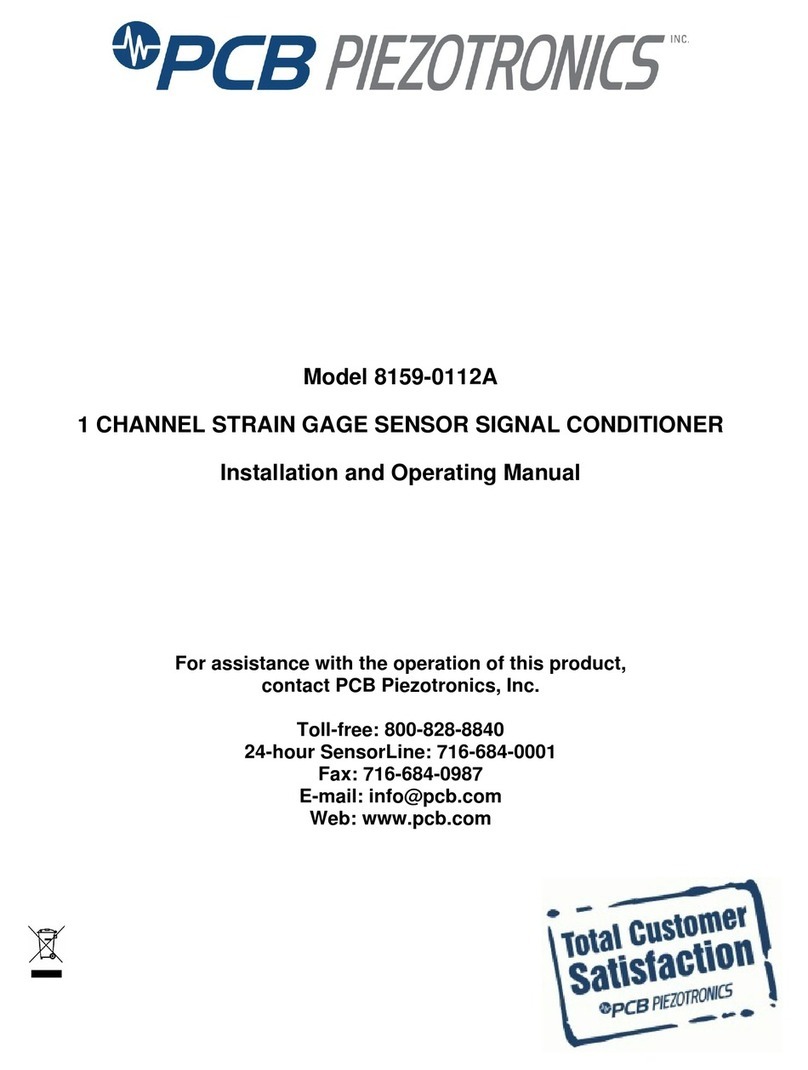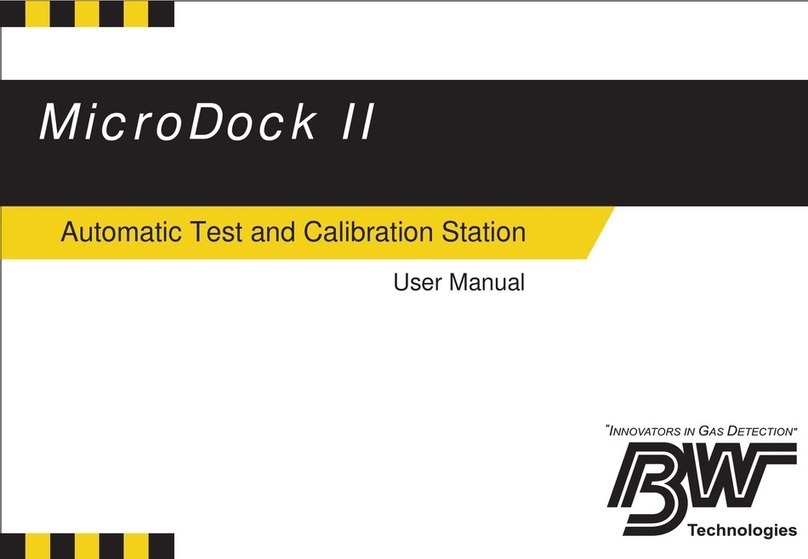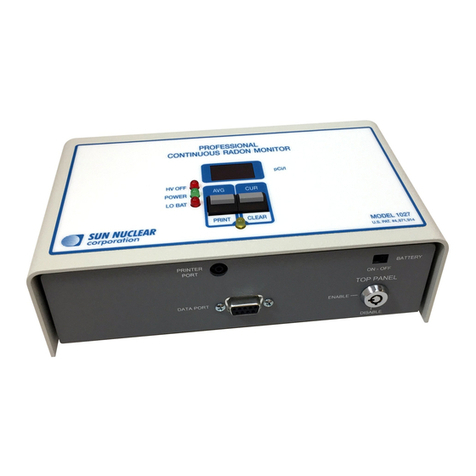
Contents
5
Contents
Consultation with Megger...............................................................................................3
Terms of Warranty ...........................................................................................................4
Contents ...........................................................................................................................5
1Safety Instructions ...........................................................................................7
1.1 General Notes ....................................................................................................7
1.2 General Safety Instructions and Warnings.........................................................8
2Technical description ....................................................................................10
2.1 System description ...........................................................................................10
2.2 Technical data ..................................................................................................12
2.3 Display and operating elements.......................................................................14
2.4 Connection elements........................................................................................15
2.5 Safety devices ..................................................................................................16
2.6 Operation in vehicle..........................................................................................17
3Commissioning ..............................................................................................18
3.1 Electrical connection ........................................................................................19
3.1.1 Use of an external safety device (optional) ......................................................23
3.2 Switch on ..........................................................................................................24
3.3 High-voltage control .........................................................................................25
4Operation ........................................................................................................26
4.1 Screen layout ...................................................................................................26
4.2 Basics of control system...................................................................................28
4.3 Quick selection of operating modes – .......................................................30
4.4 On-line help – ............................................................................................30
4.5 Phase selection – ......................................................................................31
4.6 History database - .....................................................................................32
4.7 System settings - .......................................................................................35
4.7.1 Data menu - .................................................................................................37
4.7.2 Basic settings - ...........................................................................................38
4.7.3 Administration menu - (administration password required)........................39
4.7.3.1 Updating the software - ..............................................................................40
4.7.3.2 User administration - ..................................................................................41
4.7.3.3 Connection Cable Calibration - ....................................................................42
5Performing measurements............................................................................43
5.1 Good to know …...............................................................................................43
5.1.1 Propagation velocity .........................................................................................43

